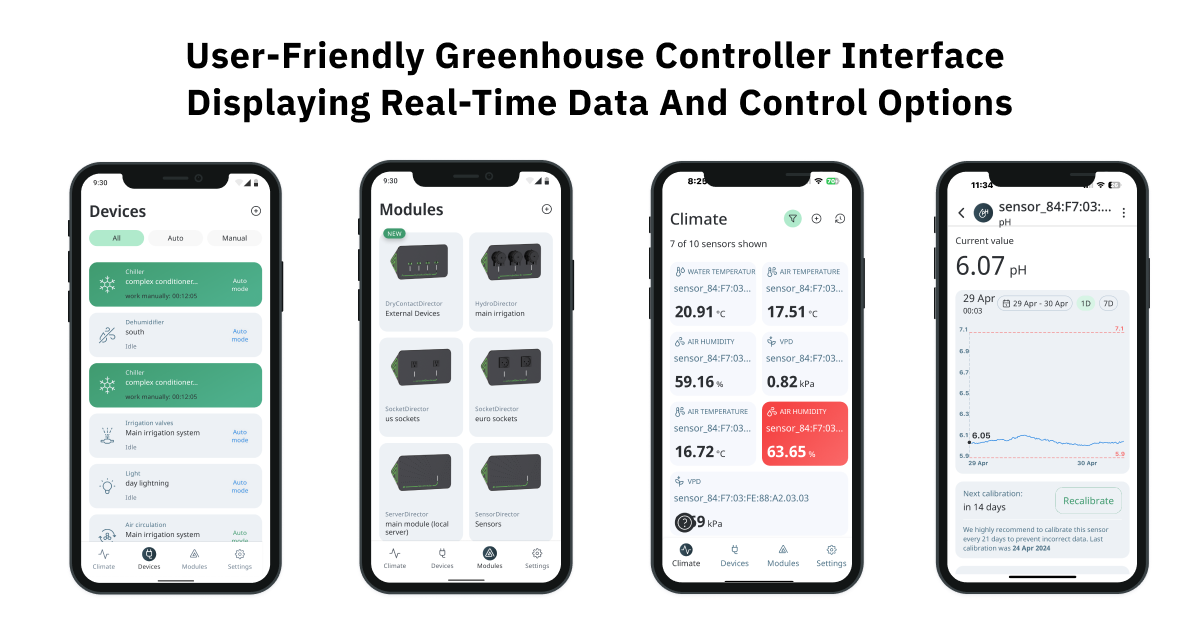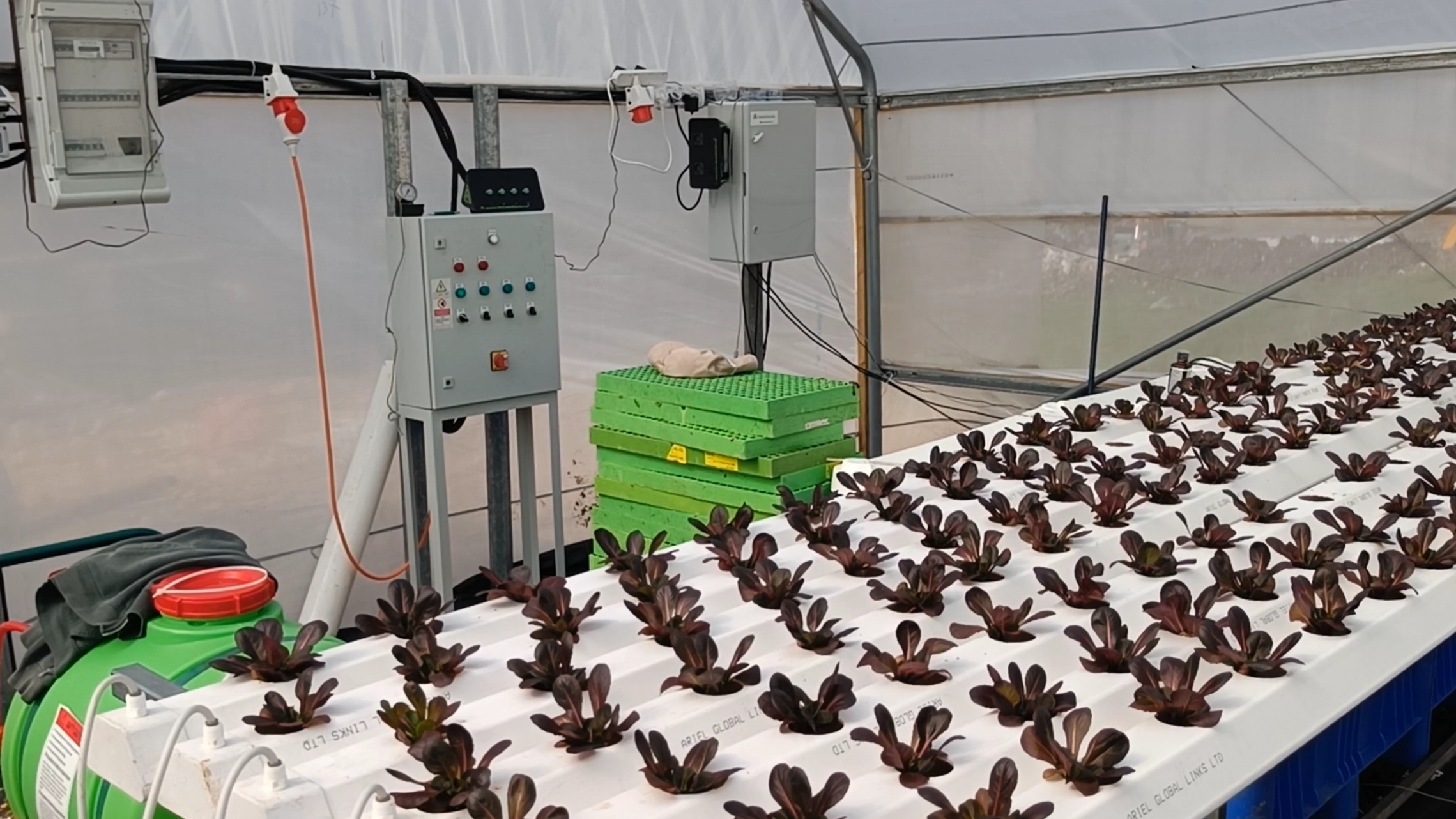
2025 Guide. How To Choose Greenhouse Climate Controllers
The Ultimate Guide to Greenhouse Climate Controllers: Everything You Need to Know to Master Your Growing Environment
Imagine stepping into your greenhouse and feeling a wave of calm assurance. No matter what the weather throws your way, you know your crops are thriving in a perfectly controlled environment. This is the power of well-chosen greenhouse climate controllers.

But with so many greenhouse climate controllers on the market, how do you find the perfect system for your unique needs? Don’t worry, you’ve come to the right place. This ultimate guide will equip you with everything you need to know to master your growing environment and maximize your yields.
Greenhouse Climate Controllers 101
Let’s start with the basics. A greenhouse controller is essentially the brain of your operation. It’s a centralized system that monitors and regulates critical environmental factors within your greenhouse, ensuring optimal conditions for plant growth.
How do they work?
Think of it as a continuous loop:
- Sensors: Strategically placed sensors throughout your greenhouse act as the “eyes and ears” of the system, constantly monitoring temperature, humidity, light levels, CO2 concentration, and more.
- Controller: The controller receives data from the sensors and, based on your pre-set parameters, sends commands to various systems.
- Actuators: These are the “muscles” of the operation. They carry out the controller’s commands, activating heating, ventilation, shading, irrigation, and other systems to maintain the desired environment.

Types of Greenhouse Climate Controllers:
- Standalone Controllers: These are self-contained units that typically control a limited number of functions. They are often used in smaller greenhouses or for specific applications.
- Integrated Controllers: These offer more comprehensive control, integrating various systems like heating, ventilation, and irrigation into a single platform.
- Cloud-Based Controllers: These cutting-edge systems leverage the power of the cloud for remote monitoring, data analysis, and advanced automation. They offer greater flexibility and scalability.
Key Components Of Greenhouse Climate Control Systems:
- Sensors: Accurate and reliable sensors are crucial for gathering accurate data. Common types include temperature sensors, humidity sensors, light sensors, CO2 sensors, and soil moisture sensors.
- Actuators: These include motors, valves, solenoids, and other devices that control the operation of various greenhouse systems.
- Software: User-friendly software is essential for configuring the controller, setting parameters, monitoring data, and generating reports.

Essential Features for Optimal Control
Now that you understand the basics, let’s delve into the essential features that every greenhouse controller should offer:
- Temperature Control: Maintaining the ideal temperature range is crucial for plant growth. Controllers should offer precise temperature regulation, with options for heating and cooling systems.
- Humidity Control: Proper humidity levels are essential for preventing diseases and promoting healthy plant development. Controllers should offer dehumidification and humidification options.
- Lighting Control: Optimizing light intensity and duration is critical for photosynthesis and plant growth. Controllers should offer features like photoperiod control, dimming, and supplemental lighting integration.
- CO2 Control: Enriching the greenhouse atmosphere with CO2 can boost plant growth and yield. Controllers with CO2 monitoring and enrichment features can help optimize this process.
- Irrigation Control: Precise irrigation is essential for delivering the right amount of water to plants. Controllers with irrigation integration can automate this process and prevent overwatering or underwatering.

Advanced Features for the Modern Grower
While the essential features mentioned above are crucial, modern greenhouse controllers offer a range of advanced capabilities that can take your operation to the next level:
- AI and Machine Learning: AI-powered controllers can analyze vast amounts of data to optimize growing conditions, predict potential problems, and automate complex tasks.
- Predictive Analytics: These greenhouse climate controllers can forecast future conditions based on historical data and weather patterns, allowing you to proactively adjust your strategy.
- Predictive analytics can anticipate potential issues like temperature spikes or humidity drops and take preventive measures. This is significantly reduce crop stress and losses.
- Remote Monitoring and Alerts: Cloud-based controllers allow you to monitor your greenhouse from anywhere in the world and receive instant alerts if any issues arise.
- Be able to monitor your greenhouse remotely with peace of mind. You can check on conditions and make adjustments from phone, even when You’re away.
- Data Logging and Reporting: Controllers with data logging capabilities can track historical data, generate reports, and provide valuable insights into your operation’s performance.
- The data logging feature is invaluable for analyzing trends and identifying areas for improvement. You can track your progress over time and make data-driven decisions.

Choosing the Best Greenhouse Control Systems for Your Greenhouse
With so many options available, selecting the right greenhouse climate controller can seem daunting. But by following these steps, you can make an informed decision:
- Assess Your Needs:
- What type of greenhouse do you have?
- What crops are you growing?
- What are your climate challenges?
- What is your budget?
- What level of automation do you need?
- Research and Compare:
- Read reviews and compare features of different controllers.
- Consider factors like ease of use, reliability, scalability, and support.
- Look for controllers that integrate with your existing systems.
- Seek Expert Advice:
- Consult with experienced growers, horticultural consultants, and controller suppliers.
- Get personalized recommendations based on your specific needs.
Installation, Maintenance, and Troubleshooting
Once you’ve chosen your controller, proper installation and maintenance are crucial for optimal performance:
- Installation:
- Follow the manufacturer’s instructions carefully.
- Ensure proper sensor placement and calibration.
- Test all systems thoroughly after installation.
- Maintenance:
- Regularly clean and calibrate sensors.
- Inspect and maintain actuators and other components.
- Update software and firmware as needed.
- Troubleshooting:
- Consult the user manual or online resources for troubleshooting tips.
- Contact the manufacturer’s support team for assistance with complex issues.

GrowDirector – Climate-Controlled Greenhouse Kits
While the features and functionalities we’ve discussed so far apply to most greenhouse climate controllers, it’s time to shine a spotlight on a system that truly embodies the future of greenhouse automation: GrowDirector 3 Pro.
This cutting-edge platform offers everything you need to create a thriving, climate-controlled greenhouse, from precise greenhouse temperature control to advanced AI-powered optimization.

Here’s what sets GrowDirector 3 Pro apart:
- Modular and Scalable: Start with the modules you need now and easily expand your system as your operation grows. This makes it a perfect fit for both climate-controlled greenhouse kits and large-scale commercial facilities.
- Wireless Freedom: Say goodbye to tangled wires and complex installations. GrowDirector 3 Pro’s wireless design simplifies setup and gives you ultimate flexibility.
- Free, Powerful Software: Get access to a suite of free software tools, including the AI Agronomist for instant plant disease diagnosis, AgriNotes for streamlined task management, and AI Support for rapid troubleshooting and assistance.
- AI-Powered Insights: Harness the power of artificial intelligence to optimize your growing environment, predict potential issues, and maximize yields.
- Intuitive Control: Manage everything from a user-friendly app, whether you’re on your desktop or on the go.
- Comprehensive Integration: Seamlessly connect and control HVAC systems, lighting, irrigation, CO2 enrichment, and even hydroponic setups.

Check the ptofessional grower’s review about the system – READ NOW
GrowDirector 3 Pro is more than just a greenhouse controller; it’s your partner in achieving sustainable, profitable, and stress-free growing.
Conclusion
A greenhouse controller is an investment in your success. By choosing the right system and implementing it effectively, you can create a thriving growing environment, maximize your yields, and achieve your production goals.
Ready to take control of your greenhouse environment? Explore our top-rated controllers (TAP HERE) or contact us (TAP HERE) for personalized advice.
